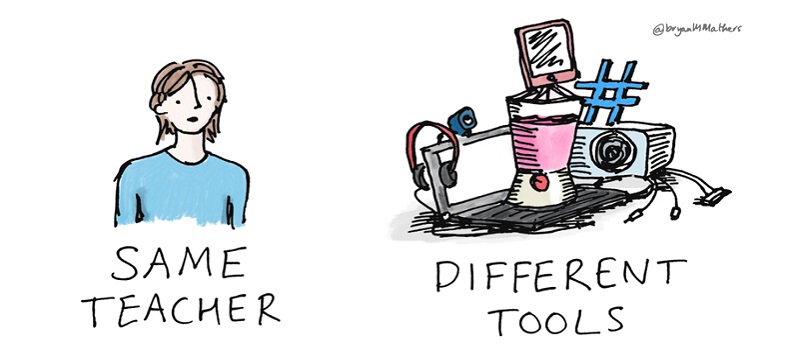Summary
This week you’ve been introduced to some of the core concepts in online teaching. Synchronous and asynchronous activities are a key distinction in teaching online, and deciding which activities or resources should be used synchronously and which asynchronously is one of the fundamental skills any online teacher must develop. Blended learning and flipped classroom techniques could become a fundamental part of thinking for teachers whose classes are divided between a face-to-face element and an online element. We will move on next week to looking at what makes effective online teaching and how education theories can inform how we approach online teaching. Before we move on, however, let’s have a few moments with Rita, to see how she’s getting on.

Transcript
After studying Week 1 of this course, Rita thinks that she has now identified what it is that she wants to do as a result of studying this course. She wants to try to move a whole course online, that she currently teaches in a classroom. She teaches this course to one cohort of undergraduates, three times a week, for one hour each time, for 12 weeks, so that is 36 hours of teaching activity to move online.
One of the reasons for trying this, is that her Friday classes are poorly attended by students, and she spends much time in the Monday classes recapping what they missed. Part of the reason for the low attendance is that the students have only this one class on a Friday, and so travelling into the university and home again just for one lesson is expensive in time and money for the students. Even though some students do not have internet access at home, the online sessions can be recorded. So the students who still have to miss the Friday online class could watch the recording on campus on Monday morning, before the next class takes place on Monday afternoon. This will also benefit those students who have other commitments such as jobs, as they will be able to watch the lessons at times that are convenient to them.
What Rita aims to achieve is to reorganise her teaching materials for this course, so that she can try to use a ‘flipped learning’ approach, setting tasks for the students to learn about before the next class. She realises that this will need a blend of synchronous and asynchronous activities.
Rita realises that the most effective method may in fact be to take a ‘blended learning approach’ by making her Friday classes online and her Monday and Thursday classes face-to-face. But she really wants to explore the power of online learning first, before considering a blended approach.
Rita has talked with her colleagues and manager about this. They are supportive, but it is clear she will be doing this alone as an ‘experiment’ to see if it could be more widely adopted. If it is successful, she may be asked to train her colleagues. Her learners are very positive about the idea, because of the flexibility for them, but some are worried about the lack of sessions in a physical classroom (some of them do not realise that a synchronous online session is not a lot different to a classroom lesson).
Now that Rita has her idea, she needs to know what underpins online teaching, how to make it happen, and which tools to consider using, and that’s what we will move onto next.
You can now go to Week 2 [Tip: hold Ctrl and click a link to open it in a new tab. (Hide tip)] .
4 This week’s quiz
